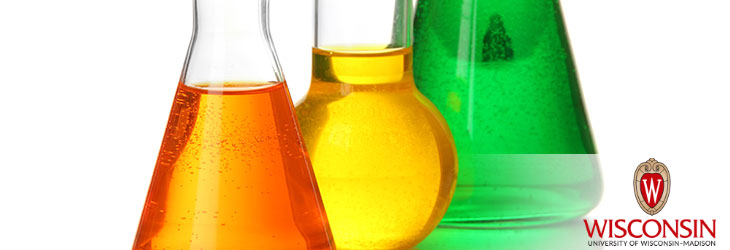Materials & Chemicals

Nanoporous Protective Coatings for Corrosion and Wear Resistance of Metal Substrates
WARF: P08101US02
Inventors: Marc Anderson, Maria Isabel Tejedor-Anderson, Ole Christensen
The Wisconsin Alumni Research Foundation (WARF) is seeking commercial partners interested in developing a thin-film coating to improve corrosion and wear resistance and reduce material cost of metal substrates.
Overview
Heat exchangers are used in chemical processing; power production; household appliances such as air conditioners, refrigerators and space heaters; and even automobile radiators. Plate heat exchangers function by using metal plates to transfer heat between two fluids, and in most applications the main components are subject to corrosion and wear. Stainless steel is a common plate material, but the life expectancy for a stainless steel plate heat exchanger is less than five years and less than one year in exceptionally corrosive applications. In these applications, more durable materials such as titanium are required. These alternative materials often are four to six times more expensive than stainless steel due to demand and scarcity. A long-felt and significant need exists for improved corrosion and wear resistance of metal substrates to reduce cost, conserve valuable resources and protect the environment.
The Invention
UW-Madison researchers have developed a method to manufacture highly corrosion- and wear-resistant metal substrates with a nanoporous oxidized surface layer. These coated substrates can be used in applications where the surface of the substrate is exposed to corrosive media.
For example, the method could be used to produce an improved stainless steel heat exchanger. An oxidized layer is added to the surface of the stainless steel plates. Then a nanoporous thin film comprised of titanium dioxide, silicon dioxide, zirconium dioxide and/or alumina is adhered to the oxidized layer. The thin film has a uniform thickness less than one micrometer with porosity in the range of 26 to 80 percent. This coating provides improved resistance to corrosion.
For example, the method could be used to produce an improved stainless steel heat exchanger. An oxidized layer is added to the surface of the stainless steel plates. Then a nanoporous thin film comprised of titanium dioxide, silicon dioxide, zirconium dioxide and/or alumina is adhered to the oxidized layer. The thin film has a uniform thickness less than one micrometer with porosity in the range of 26 to 80 percent. This coating provides improved resistance to corrosion.
Applications
- Corrosion- and wear-resistant coatings of metal substrates, including stainless steel, carbon steel and aluminum
- Industrial, marine and aquaculture applications with highly corrosive fluids such as elemental and organic acids, seawater, salts, ammonia gases or chlorine bleach
- Stainless steel cookware
Key Benefits
- Improves resistance to pitting and wear in corrosive media
- Provides high compliance between coating and substrate
- Replaces plate heat exchangers made entirely of costly titanium
- Improves resistance to corrosion of standard stainless steel
- Protects stainless steel surfaces from scratches and wear
Stage of Development
Aggressive corrosion tests for plate heat exchangers were performed with almost saturated salt water. No corrosion holes were found in the coated plates, in contrast to non-coated plates, which corroded quite easily.
Additional Information
Related Intellectual Property
Tech Fields
For current licensing status, please contact Michael Carey at [javascript protected email address] or 608-960-9867